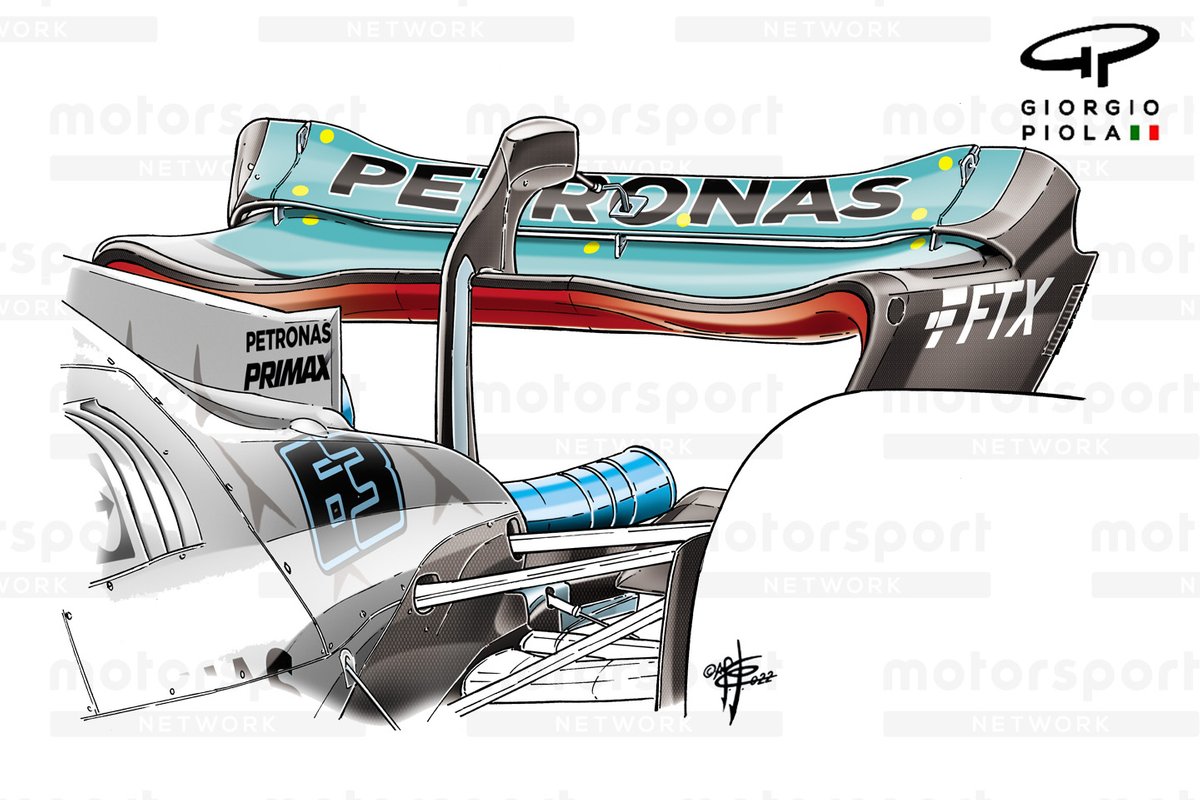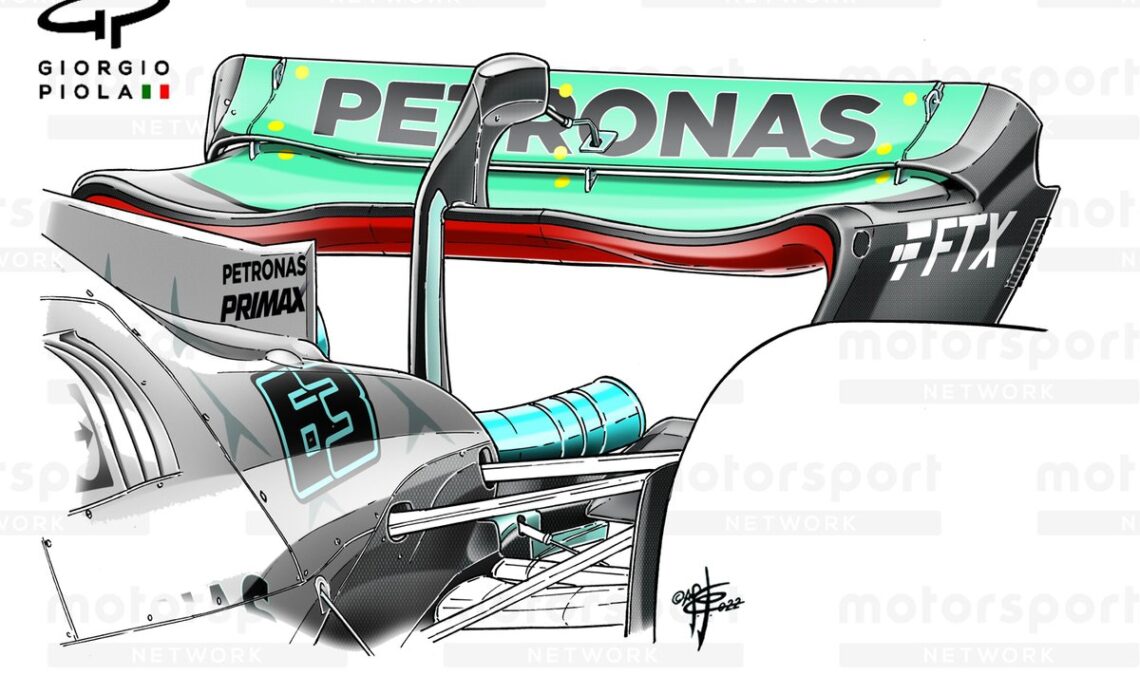As well as last year’s W13 suffering from porpoising and a lack of useable downforce, it also left Lewis Hamilton and George Russell facing a deficit on the straights.
The team was keen to address its aero efficiency for this year, but one of the notable factors in last week’s Bahrain test was that it appeared to have not made dramatic progress on that front.
Part of the explanation seemed obviously though, as the squad conducted its entire test programme with what looked like a high-downforce rear wing. This was in contrast to competitors who ran some of their laps with very different arrangements.
Mercedes clearly had a plan in place, though, as the W14 was spotted in the Sakhir pitlane on Thursday with a lower downforce specification wing.

Hamilton himself explained that the new rear wing was being brought as an experiment, and played down talk of it being a game-changer.
“We hope it will be more suited to this circuit, but I don’t think that’s going to change everything,” he said. “Hopefully it will push us in the right direction.
“We have definitely a much better understanding of where we need to put the car, where the weak points of the car are. Those won’t be fixed right now, but the men and women back in the factory are focusing on getting there as soon as possible.”
Bringing such a low-downforce solution so early in the campaign marks a change of tact for Mercedes.
Last year, the W13 didn’t receive this treatment until Miami, with the upper flap’s trailing edge cut down in the interim to help reduce drag.
This time, not only has action been taken earlier but it’s an entirely new rear wing assembly.
Whilst this design language might be familiar to Mercedes under the guise of the pre-2022 regulations, it didn’t favour the spoon-shaped mainplane design at all last season.
This put it at odds with most of the field, with rivals more than happy to leverage the aerodynamic advantages that can be gained from the design architecture.
The spoon-shaped mainplane design has long been used by teams as a means to have their cake and eat it, with the central, deeper portion of the wing expected to generate more downforce, whilst the outer, shorter chord portion of the wing blends with the endplate to reduce the drag generated.
Their new design, much like what is seen on the Red Bull, bears its underbelly to the oncoming flow.
This is similar to how the central section of its higher downforce wing would work, whereas the leading edge of the…
Click Here to Read the Full Original Article at Autosport.com – Formula 1 – Stories…

